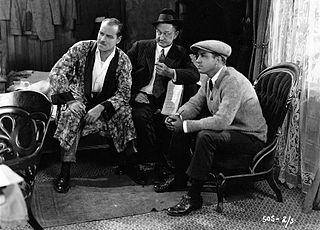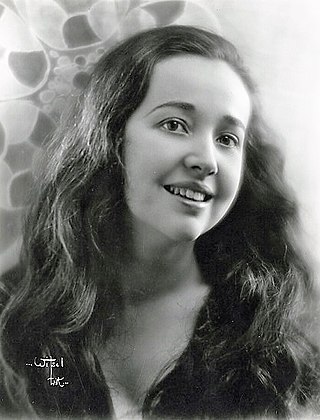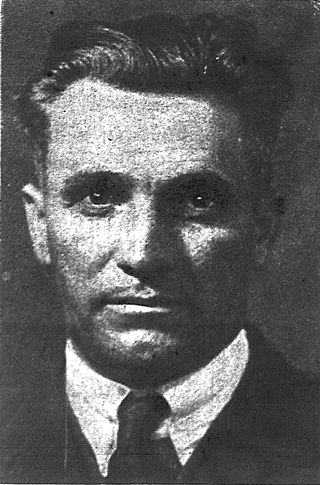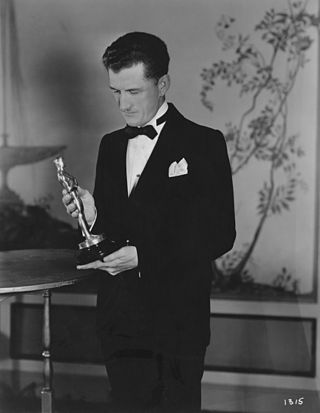Related Research Articles

William Desmond Taylor was an Anglo-Irish-American film director and actor. A popular figure in the growing Hollywood motion picture colony of the 1910s and early 1920s, Taylor directed fifty-nine silent films between 1914 and 1922 and acted in twenty-seven between 1913 and 1915.

George Brackett Seitz was an American playwright, screenwriter, film actor and director. He was known for his screenplays for action serials, such as The Perils of Pauline (1914) and The Exploits of Elaine (1914).

Charles G. Rosher, A.S.C. was an English-born cinematographer who worked from the early days of silent films through the 1950s.

Roland West was an American film director, known for his innovative proto-film noir movies of the 1920s and early 1930s. He is however best known for his possible involvement in the death of Hollywood actress Thelma Todd in 1935.

Arthur Edeson, A.S.C. was an American cinematographer. Born in New York City, his career ran from the formative years of the film industry in New York, through the silent era in Hollywood, and the sound era there in the 1930s and 1940s. His work included many landmarks in film history, including The Thief of Bagdad (1924), All Quiet on the Western Front (1930), Frankenstein (1931), The Maltese Falcon (1941), and Casablanca (1942).

Marshall Ambrose "Mickey" Neilan was an American actor, director, producer, and screenwriter, whose work in films began in the early silent era.

Edward F. Sands, also known as Edward Fitzwilliam Strathmore and Jazz, was a suspect in the murder of Hollywood director William Desmond Taylor on February 1, 1922.

Arthur Charles Miller, A.S.C. was an American cinematographer. He was nominated for the Oscar for Best Cinematography six times, winning three times: for How Green Was My Valley in 1941, The Song of Bernadette in 1944, and Anna and the King of Siam in 1947.

Charles Edgar Schoenbaum A. S. C. was an American cinematographer. His known film credits began in 1917—although he probably had earlier films—and ended with his untimely death from cancer in 1951 at age 57. He was nominated for an Academy Award in 1949 for his work on Little Women.

Helen Jerome Eddy was a movie actress from New York City. She was noted as a character actress who played genteel heroines in films such as Rebecca of Sunnybrook Farm (1917).

Robert McKim was an American actor of the silent film era and a performer in vaudeville. He appeared in nearly 100 films between 1915 and 1927. He played the arch villain opposite Douglas Fairbanks's Zorro in The Mark of Zorro in 1920.

Herbert Blaché, born Herbert Reginald Gaston Blaché-Bolton was a British-born American film director, producer and screenwriter, born of a French father. He directed more than 50 films between 1912 and 1929.

Bertram Millhauser was an American screenwriter. He wrote for more than 60 films produced between 1911 and 1960. He was born in New York City, New York and died in Hollywood, California from a heart attack.

Virgil Miller was an American cinematographer who was the director of photography for 157 films between 1917 and 1956.

Clyde De Vinna was an American film and television cinematographer and director of photography. He won the Academy Award for Best Cinematography for White Shadows in the South Seas presented by the Academy of Motion Picture Arts and Sciences in 1930 at its 2nd Academy Awards show.
Henry Lyman Broening was a well known American cinematographer. Later, he was also on the editorial board of American Cinematographer magazine. He worked on films that include May Blossom (1915) and wrote about the beginnings of the ASC.
Allen G. Siegler was an American cinematographer who lensed nearly 200 films and television episodes between 1914 and 1952. He worked at Columbia Pictures for many years, and was an early member of the American Society of Cinematographers.
Arthur A. Cadwell was an American cinematographer and race car driver who worked in Hollywood in the 1910s and 1920s.
Ned Van Buren (1882-1969) was an early American cinematographer who worked in Hollywood during the silent era. He was a member of the American Society of Cinematographers, having been elected in 1923.
References
- 1 2 3 Fleming, E. J. (2015-09-16). Hollywood Death and Scandal Sites: Seventeen Driving Tours with Directions and the Full Story, 2d ed. McFarland. ISBN 978-0-7864-9644-0.
- 1 2 "Arrest in Gray Slaying Looms". Bradford Evening Star. 6 Jul 1938. Retrieved 2020-08-23.
- ↑ "Mystery Shrouds Hollywood Death". The Sunday News. 3 Jul 1938. Retrieved 2020-08-23.
- ↑ "Question Two More Women in Mystery Hollywood Slaying". Daily News. 3 Jul 1938. Retrieved 2020-08-23.
- 1 2 "King D. Gray Was Murdered, Jury Decides". The Knoxville Journal. 6 Jul 1938. Retrieved 2020-08-23.
- ↑ "Jealousy Seen Behind Killing of Cameraman". Daily News. 2 Jul 1938. Retrieved 2020-08-23.
- ↑ "Murder Suspect Offers Alibi". The Oakland Tribune. 14 Sep 1938. Retrieved 2020-08-23.
- ↑ "Convict's Past Being Storied". Reno Gazette-Journal. 21 Jul 1938. Retrieved 2020-08-23.